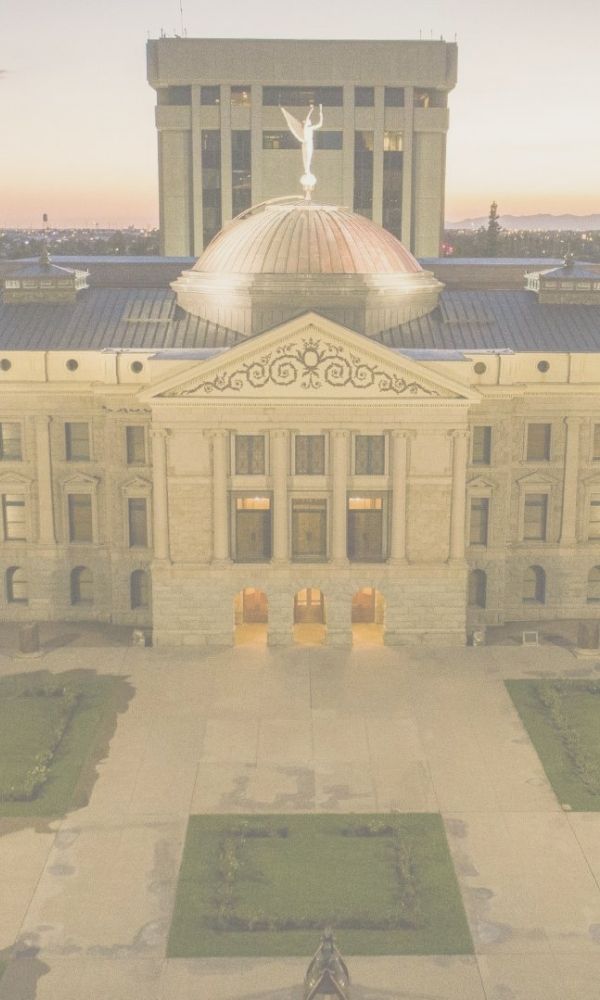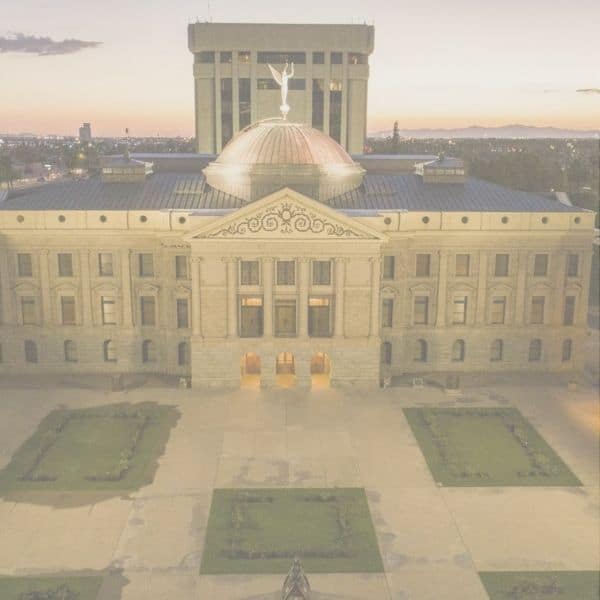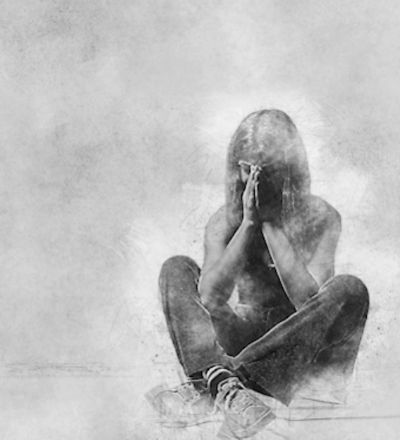Donate
These reports represent hundreds of hours of research by the Unsilenced Investigative Research Team. As you review this report, please consider donating. Your contribution will help us continue our work advocating for survivors and youth. Every donation makes an impact, no matter the size. Thank you for your support!
Completed by:
The Unsilenced Investigative Research Team
The Troubled Teen Industry in Arizona
Impact Report
2022
Impact Report
2022
Introduction
The ‘troubled teen’ industry is a network of residential programs that claim to provide treatment for the behavioral and developmental needs of youth. The industry’s lack of transparency and accountability has led to widespread abuse of youth, resulting in hospitalizations, prolonged trauma and death.
Today, there are an estimated 120,000 – 200,000 minors in residential programs across the United States. These youth are placed each year by state child welfare agencies, juvenile justice courts, mental health providers, refugee resettlement agencies, school districts’ individualized education programs, and by parents.
Many of these youth have trauma histories, which are only exacerbated by being removed from their communities and institutionalized. Youth with lived experience describe these programs as being carceral, harsh, and abusive.
An estimated $23 billion dollars of public funds annually are used to place youth in residential programs. Daily rates for residential treatment ranges from $250-$800, costing up to $292,000 per year, per child.
It is overwhelmingly clear that our communities and agencies are over-relying on residential placements that are negatively impacting the youth they serve.
Introduction
The ‘troubled teen’ industry is a network of residential programs that claim to provide treatment for the behavioral and developmental needs of youth. The industry’s lack of transparency and accountability has led to widespread abuse of youth, resulting in hospitalizations, prolonged trauma and death.
Today, there are an estimated 120,000 – 200,000 minors in residential programs across the United States. These youth are placed each year by state child welfare agencies, juvenile justice courts, mental health providers, refugee resettlement agencies, school districts’ individualized education programs, and by parents.
Many of these youth have trauma histories, which are only exacerbated by being removed from their communities and institutionalized. Youth with lived experience describe these programs as being carceral, harsh, and abusive.
An estimated $23 billion dollars of public funds annually are used to place youth in residential programs. Daily rates for residential treatment ranges from $250-$800, costing up to $292,000 per year, per child.
It is overwhelmingly clear that our communities and agencies are over-relying on residential placements that are negatively impacting the youth they serve.

Arizona Statistics
$104+
Million Dollars
Arizona spent on out-of-home congregate care placements in 2020
7,359
Children Under 12
placed in residential facilities through Child Welfare programs in 2019
606
Juvenile Justice Youth
placed in residential facilities through Juvenile Justice programs in 2019
- 276 minors were committed to a residential facility as part of a court ordered disposition
- 315 minors were detained in a residential facility while awaiting a court hearing, adjudication, disposition or placement elsewhere
- 15 minors were voluntarily admitted to a residential facility in lieu of adjudication as part of a diversion agreement

Arizona Statistics
$104+
Million Dollars
Arizona spent on out-of-home congregate care placements in 2020
7,359
Children Under 12
placed in residential facilities through Child Welfare programs in 2019
606
Juvenile Justice Youth
placed in residential facilities through Juvenile Justice programs in 2019
- 276 minors were committed to a residential facility as part of a court ordered disposition
- 315 minors were detained in a residential facility while awaiting a court hearing, adjudication, disposition or placement elsewhere
- 15 minors were voluntarily admitted to a residential facility in lieu of adjudication as part of a diversion agreement
An Arizona Problem
A team of researchers reviewed 230 studies of residential treatment facilities from around the nation and found there was no evidence that they were effective.
In 2019, Arizona was home to 1,640,236 minors, including 13,082 minors in foster care
Arizona has 539 Licensed Residential Facilities with a total capacity for 9,249 minors
The facility types with the highest capacity for housing minors in Arizona are:
-
- 509 Private Residential Service Organizations with capacity for 8,137 Minors
- 18 Secure Detention Facilities with capacity for 732 Minors
- 8 Secure Care Facilities with capacity for 216 Minors
State placing agencies per A.R.S. § 15-1181(12) are
- Department of Juvenile Corrections (ADJC)
- Department of Economic Security (DES)
- Department of Child Safety (DCS)
- Arizona Health Care Cost Containment System (AHCCCS)
- Administrative Office of the Courts (AOC)
Students may also be placed by state placing agencies and Individualized Education Programs (IEP) teams for care, safety, and treatment purposes or educational needs into residential treatment centers (RTC)
Minors residing in Residential Facilities in Arizona are at-risk for abuse, neglect, and long-term harm
Arizona determined that at least 10 Group Home and Residential Facility Staff Members and 21 Foster Parents caused or knowingly allowed the maltreatment of a child in 2020

Illustration by Spencer Holladay, USA Today Network; Getty Images
“Many kids don’t get help. Others never needed institutional care in the first place.”
Fred Clasen-Kelly, Amritpal Kaur Sandhu-Longoria, Rachel Berry, Brad Zinn, Kristen Johnson, Brian Gordon
The Fayetteville Observer
Current Oversight
The ADHS Home Public Health Licensing Services Child Care Facilities Licensing.
Arizona Administrative Code for Child Care Facilities:
Child Care Facilities
“Child care facility” means any facility in which child care is regularly provided for compensation for five or more children not related to the proprietor. Ariz. Rev. Stat. § 36-881(3).
The Arizona Department of Child Safety, Office of Licensing and Regulation (OLR) is the licensing and regulatory authority that licenses and monitors Foster Homes, Congregate Care Agencies, licenses
Child Welfare Licensing:
The Child Welfare Licensing (CWL) Unit assists in the licensure and ongoing monitoring of congregate care agencies across the State of Arizona to ensure safe homes for children.
The CWL unit reviews information during the licensing process, during ongoing monitoring from OLR, and during the duration of an agency’s license. OLR is the licensing agency and the licensing authority for Child Welfare Licensing across Arizona.
Arizona Administrative Code (A.A.C.) Title 6, Chapter 5, Article 74 and Title 21, Chapter 8 are the licensing rules that govern Child Welfare Agencies.
ARTICLE 74. LICENSING PROCESS AND LICENSING REQUIREMENTS FOR CHILD WELFARE AGENCIES OPERATING RESIDENTIAL GROUP CARE FACILITIES AND OUTDOOR EXPERIENCE PROGRAMS R6-5-7401.
- “Facility” or “residential group care facility” means a living environment operated by a child welfare agency, where children are in the care of adults unrelated to the children, 24 hours per day.
- “Facility” does not include a program licensed as a behavioral health service agency by the Department of Health Services under A.R.S. 36-405 and 9 A.A.C. 20.
- “Facility” does include an outdoor experience program. When used in reference to an outdoor experience program, “facility” means the campsite at which or the mobile equipment in which children are housed.
- “Outdoor experience program” means a child welfare agency that is located in a cabin or portable structure such as a tent or covered wagon and primarily uses the outdoors to provide recreational and educational experiences in group living, either in a fixed campsite or in a program with an unfixed site, such as a wagon train or wilderness hike.
FOSTER HOME LICENSING
The Family Home Licensing (FHL) unit assists in the licensure and ongoing monitoring of foster families across the State of Arizona to ensure safe homes for children.
The FHL unit reviews information during the licensing process, during ongoing monitoring from OLR, and during the duration of a family’s license. OLR is the licensing authority for Foster Home Licensing and works with licensing agencies that conduct training, monitoring, and support to foster families within communities across Arizona.
Arizona Administrative Code (A.A.C.) Title 21, Chapter 6 and Title 21, Chapter 8 are the licensing rules that govern foster homes.
CHILD WELFARE LICENSING
The Child Welfare Licensing (CWL) Unit assists in the licensure and ongoing monitoring of congregate care agencies across the State of Arizona to ensure safe homes for children.
The CWL unit reviews information during the licensing process, during ongoing monitoring from OLR, and during the duration of an agency’s license. OLR is the licensing agency and the licensing authority for Child Welfare Licensing across Arizona.
Arizona Administrative Code (A.A.C.) Title 6, Chapter 5, Article 74 and Title 21, Chapter 8 are the licensing rules that govern Child Welfare Agencies.
Media Coverage
- August 3, 2018 2 Workers at Arizona Migrant Children Centers Are Charged with Sexual Abuse Matthew Haag
- January 25, 2019 Family to give up troubled son to get treatment for him Tuscon.com Emily Bregel
- May 14, 2019 Court documents: Worker accused of sexually abusing young girls at Phoenix group home 12 News Bianca Buono
- July 24, 2019 Whistleblowers: Profit Over Safety At Sonora Behavioral Hospital Patch Beth Dalby
- November 4, 2019 HOSPITAL IN JEOPARDY: Family sues Sonora Behavioral Health over daughter’s death KOLD News 13 Wendi Redman
- February 6, 2020 Lack of mental health facilities, funds force some Arizona children out of state ABC 15 Arizona Courtney Holmes
- August 12, 2020 41 children with disabilities reported sexual assaults at Devereux nonprofits nationwide: Report KTLA 5 News Associated Press
- August 12, 2020 School-to-prison pipeline has deep roots in tangled history of tribal schools Cronkite News Calah Schlabach
- December 21, 2020 Mother of teen with autism demanding answers from facility he went missing from and Phoenix PD ABC 15 Arizona Sonu Wasu
- May 11, 2022 US finds 500 Native American boarding school deaths so far AP News Felicia Fonseca
- March 26, 2021 Activists, state authorities and lawsuits filed by survivors are putting pressure on the ‘troubled teens’ industry to change its ways The Conversation Heather Mooney
- ND Accessed 5.19.22 In Phoenix area, 2 out of 5 kids risk a DCS call. It’s worse for Black and Native kids AZ Central Mary Jo Pitzl
Additional Information
Unsilenced Program Database: Arizona Programs
Contact: info@unsilenced.org
There are over 100+ residential facilities for minors in Arizona documented in the Unsilenced Archive. Listings include news articles, incident reports, lawsuits, and personal accounts from former attendees.
The information provided within UnSilenced.org is for general informational purposes only. All information is provided in good faith. However, we do not warrant, endorse, guarantee, or assume responsibility for the accuracy or reliability of any information offered by third-party posters, testimonials, comments, or submissions. Most information posted reflects the opinion of the writer and does not directly reflect the views, or positions of the owners of UnSilenced.org
Read More
